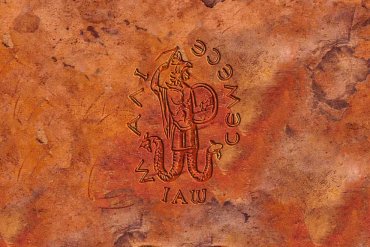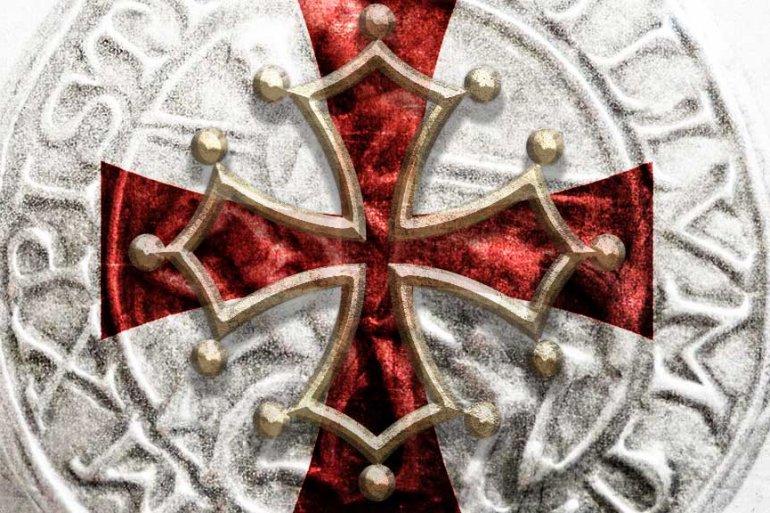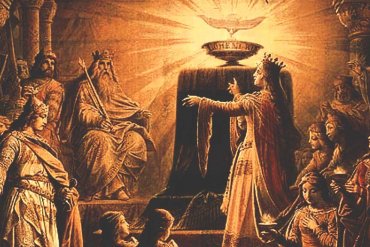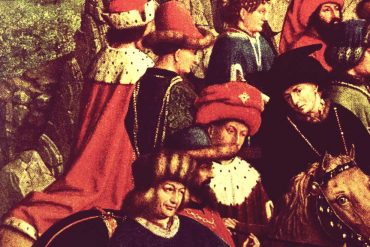Carl Jung had written extensively on Abraxas. In his 1916 book called The Seven Sermons to the Dead, Jung called Abraxas a God higher than the Christian God and Devil that combines all opposites into one Being. Abraxas was a polymorphous world spirit which permeates — or even encompass — the very fabric of existence. Abraxas is … a thousand-armed polyp, coiled knot of winged serpents … the hermaphrodite of...
The Hidden Wisdom in Arthur’s Grail – In the Celtic sources that are the assumed origin of the Arthurian legends, we are told that the Grail is a cauldron, a symbol both of fertility and immortality. The cauldron was a powerful religious icon of its day. As mentioned earlier in another post, it brought forth marvellous and magical feasts, revitalizing and resurrecting great and powerful armies. According to Gardiner, as...
The French historian Raimonde Reznikov’s book ‘Cathares et Templiers’ can be something of a scholar’s antidote to the wilder extremes of conspiracy mongering. As reported by Reznikov, besides the evident link that Templars and Cathars were suppressed by shared conspiracy between state and church, the solely genuine sympathetic link originated from the imaginations of eighteenth-century Freemasons. She writes: The Templar mythology, fabricated in the 18th century in the bosom of German lodges by the vanity of Freemasons, desirous to join […]...
In Celtic Scotland there exist plenty traditions of sacred locations, places and folklore about people crossing into the Otherworld, a number of which are identified with sorcha (pronounced “sahkhaa”). This is an ancient phrase that means both ‘paradise’ and ‘illuminated being.’ Once again there’s a similarity with Egypt. Because the syllable ka is their word for ‘risen soul or awareness.’ Sidh Chailleann is the core of Scottish Otherworld tradition. This...
Like in all ancient Norse myths codes and messages are hidden within. Mainstream scholars like us to believe that these myths are just simple stories to entertain or to describe natural phenomena our dumb forefathers were too ignorant to understand. But these tales are like riddles and intellectual challenges to be solved and contain real wisdom and knowledge. Ms. Jessie L. Weston, after more than thirty years of study, wrote...
Warning: Major spoilers ahead for “Maier files” Somewhere in central Europe dwells a very ancient society known by its Gothic name: Gards Aúirkeis, or the house of the Chalice. Some claim that its members protect an ancient knowledge and they have access to the wisdom of a lost civilization, others claim they form an ancient witch coven with roots going back in time as over 2000 years to the ancient Goths and even far beyond that. But no-one knows who […]...
In the early 1180s, as the shadow of Saladin lengthened over the Holy Land, a nobleman with Merovingian ancestry, Philip d’Alsace, count of Flanders, commissioned the greatest poet of the age, Chrétien de Troyes, to do a French reworking of a strange tale about a poor knight, the son of a widow, who attains the kingship of the Holy Grail. Philip d’Alsace Philip supposedly found the tale in an ancient...
Lohengrin to manhood grew And gave the Grail his service true … Across the sea a maiden dwelt … She a princess of Brabant. From Munsalvach he was sent Whom the Swan did bring … Wolfram von Eschenbach, Parzival Swan Knight The Swan Knight tale occurs in the thirteenth-century Grail document Sone de Nansay. And Wolfram von Eschenbach links him, under the name of Lohengrin, with the Grail family...
Meister Eckhart (the thirtheenth-century German mystic) once said, “if you fight your death, you’ll feel the demons tearing away your life, but, if you have the right attitude to death, you will be able to see that the devils are really angels setting your spirit free. In the ancient belief systems, the being who guides the human spirit through the underworld and helps negotiate the way past the guardian demons is the god of planet Mercury. In the Mystery schools […]...
The Elucidation is an anonymous Old French poem of the early 13th century, which was written to serve as a prologue to Chrétien de Troyes‘ Perceval, le Conte du Graal. It is preserved in only one manuscript, Mons 331/206 (olim 4568), and in the Prose Perceval printed in 1530. Moreover, a German translation by Philipp Colin and Claus Wisse appeared in the Nüwe Parzefal of the 14th-century. Goethe The poet,...
The iconography of The Ghent Altarpiece has since a long time fascinated researchers. When it was finished in 1432, the work of art became instantly the most famous in Europe. It was the first real oil painting. Oil had been utilized to tie shades to artistic creations since the Middle Ages, however Jan van Eyck was the first to exhibit the genuine capability of oils, which permit far greater subtlety...
Grimm writes that the Hörselberg of Thuringia was still considered in the 10th through 14th centuries to be the residence of the German goddess Holda and her host. He cited legends of night-women in the service of dame Holda. Those women rove through the air on appointed nights, mounted on beasts. He asserted that they were originally dæmonic elvish beings, who appeared in woman’s shape and did men kindnesses. Grimm asserted that the identity of Venus with the German goddess […]...













